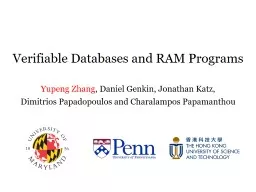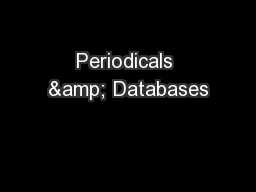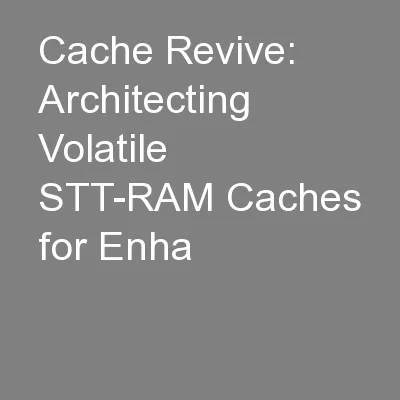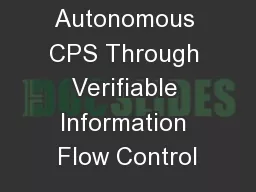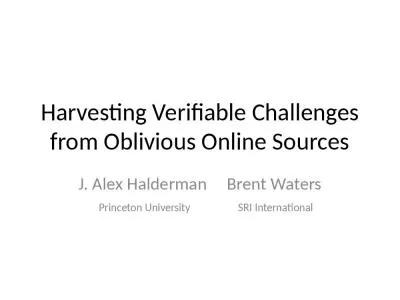PPT-Verifiable Databases and RAM Programs
Author : pamella-moone | Published Date : 2018-03-19
Yupeng Zhang Daniel Genkin Jonathan Katz Dimitrios Papadopoulos and Charalampos Papamanthou Cloud Computing Individuals Companies Universities Security Issue
Presentation Embed Code
Download Presentation
Download Presentation The PPT/PDF document "Verifiable Databases and RAM Programs" is the property of its rightful owner. Permission is granted to download and print the materials on this website for personal, non-commercial use only, and to display it on your personal computer provided you do not modify the materials and that you retain all copyright notices contained in the materials. By downloading content from our website, you accept the terms of this agreement.
Verifiable Databases and RAM Programs: Transcript
Download Rules Of Document
"Verifiable Databases and RAM Programs"The content belongs to its owner. You may download and print it for personal use, without modification, and keep all copyright notices. By downloading, you agree to these terms.
Related Documents

